October is National Animal Safety and Protection Month, making it the perfect time to make sure your home is a safe place for your cat. Many people kitten-proof their homes when adding a new kitten to their family but the same awareness is rarely taken with an adult cat. That’s an unfortunate oversight, since adult cats are still curious, frisky, and prone to mischief. Here are some simple steps you can take to protect your cat from common dangers.
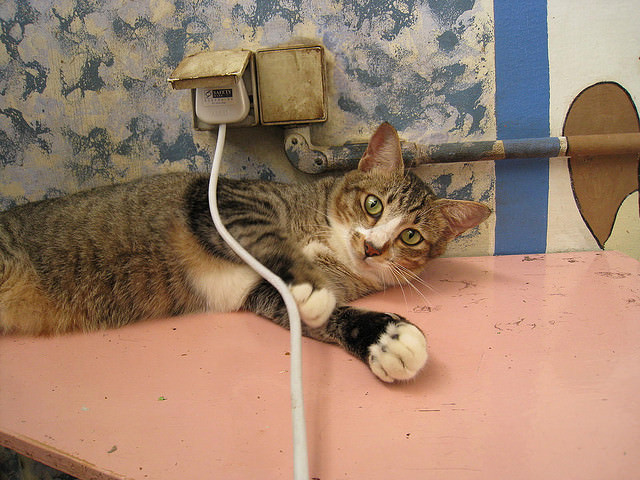
Image Source: eefeewahfah via Flickr.com
Protect, Cover, or Tie Up Cords
As natural hunters, cats will attack anything that dangles, wiggles. Actually, they will attack anything that even remotely resembles something that would dangle or wiggle. A power cord can be very dangerous– and even fatal– if your cat manages to puncture it with her teeth or claws.
You can keep your cat safe by making the cords as inaccessible as possible. If they can’t be hidden behind or under furniture, invest in cord protectors and get into the habit of unplugging any non-essential electronics after you use them.
Power cords aren’t the only kind that are dangerous. The cords that dangle from your window blinds can strangle or choke your cat! To avoid this, tie loose knots in the cords to lift them out of her reach.
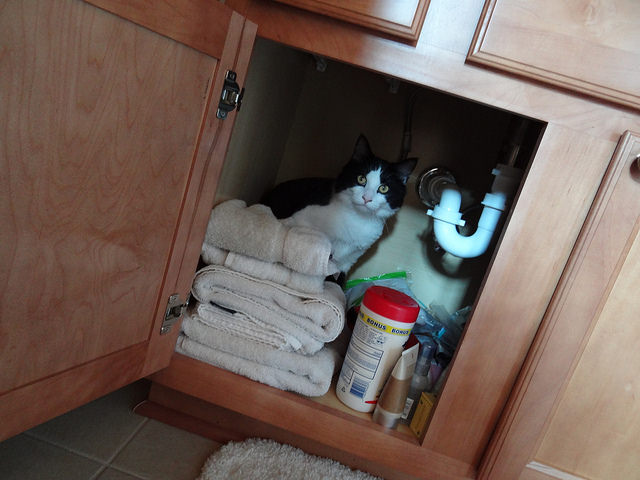
Image Source: Shannon via Flickr.com
Lock Your Cabinets
Cats love to explore, especially when the exploration could lead to discovering a great new hiding place. Cabinets are a very obvious lure: they’re dark, quiet, cool, and inconspicuous. The problem is that cabinets are often where we hide items that can be dangerous or toxic to our cats, like cleaning solutions, body care products, and medications.
Don’t discount the possibility of your cat consuming something toxic that you’ve hidden away under the sink. Even if your cat doesn’t directly lick a product, traces could end up on her paws and consumed through grooming. Depending on the product, even a small amount licked from her paw could be toxic to an average-sized cat.
To solve this problem, use child safety locks on your cabinets. If you’ve got an extra cabinet, leave an empty one accessible to your cat.
While we’re on the subject of cabinets and medication, be careful to quickly retrieve any medications dropped on the floor. A stray pill can be very dangerous to a cat who eats it.
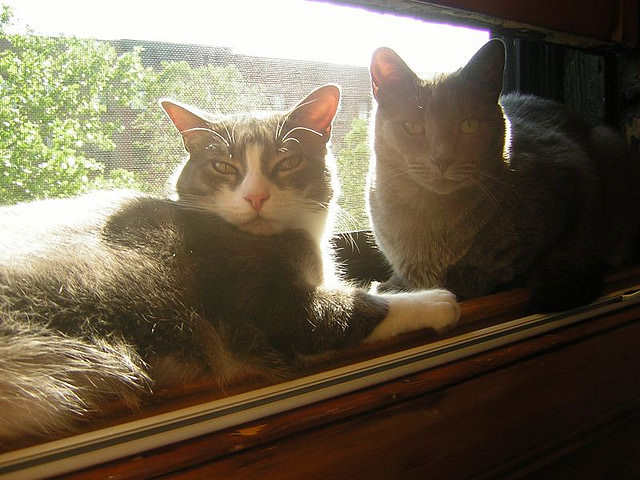
Image Source: Valentina Powers via Flickr.com
Double-Screen Open Windows
Cats love to sit in windows, especially when they’re open. It can be very fulfilling for a cat to take in all of the smells, sounds, breeze, fluttering birds, and buzzing insects. But what if the weight of your cat leaning on the screen pushes it out? Or what if the screen has a manufacturer’s defect that keeps it from being secure? In a worst case scenario, your cat could become injured (perhaps fatally) when falling out of the window. Even a best case scenario can mean a lost cat who is suddenly exposed to all of the dangers of the outdoors.
An expandable screen will give your cat an extra layer of safety while she enjoys all of the benefits of window lounging.
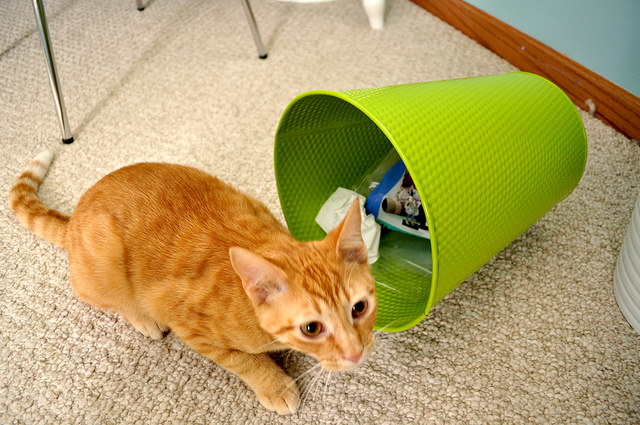
Image Source: Jessica Fiess-Hill
Cover Your Trash
Take a moment to think of the dangerous things in your trash: strips of dental floss, old razors, expired food, scraps of cat-toxic food (coffee grounds, onions, etc.), cotton swabs. If your trash cans are uncovered, you’re giving your cat easy access to dangers that she’ll be naturally attracted to as an explorer and hunter.
Invest in covered trash cans or hide your trash behind locked cabinets.
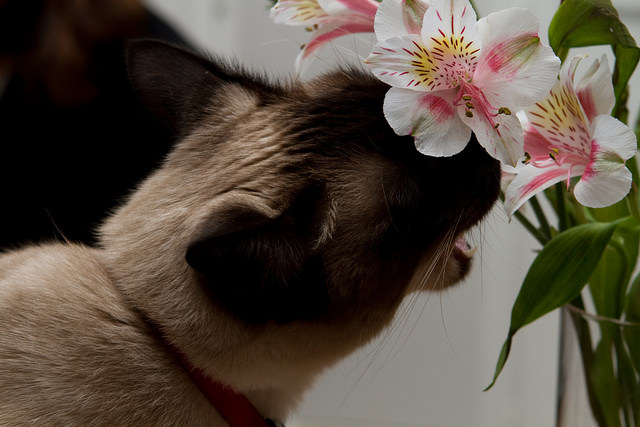
Image Source: dmetriks via Flickr.com
Get Rid of Toxic Plants
It’s not good enough to simply put your toxic plants on a high shelf. Cats are known for their spryness, and yours will find a way to the top of a bookshelf if she really wants to (she just may not be able to find her way back down afterwards).
Gift your toxic plants to friends and families who don’t live with pets and fill your home with plants that won’t make your cat sick if she can’t resist a nibble. The ASPCA has compiled a great list of houseplants that are safe for cats.

